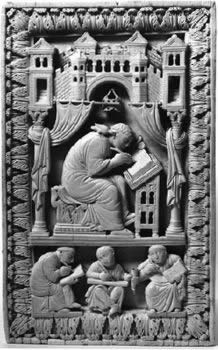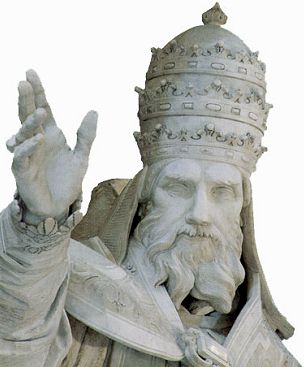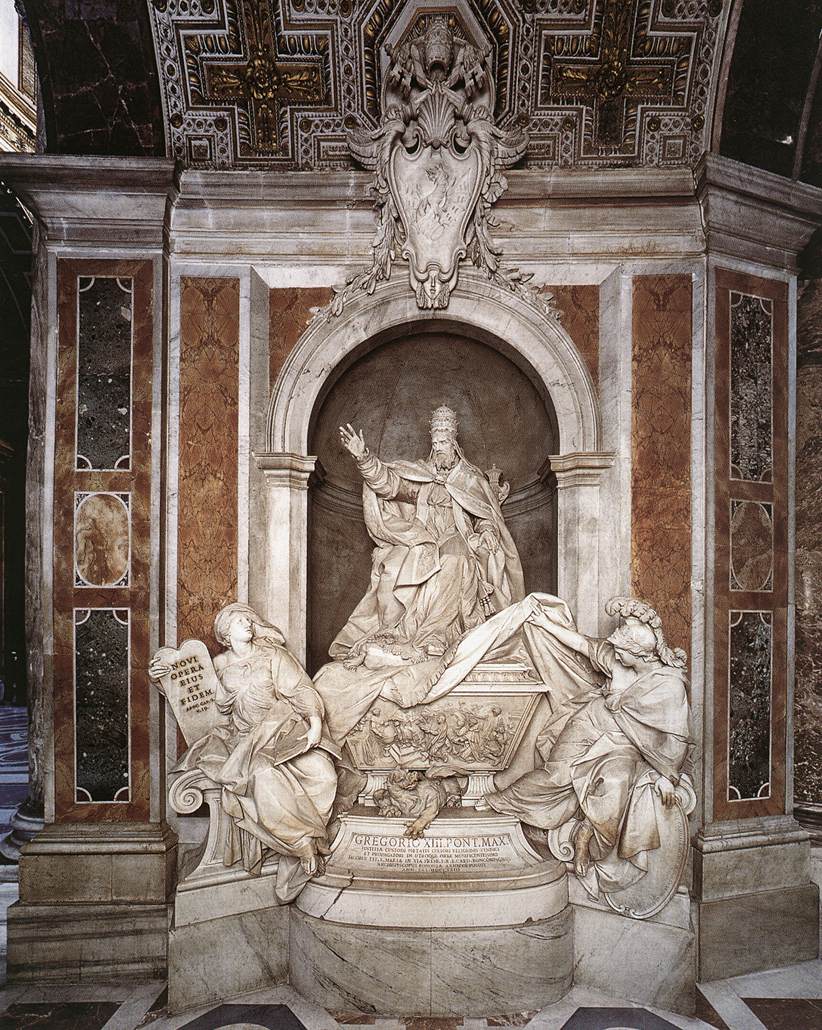|
Gregorian Chant Gregorian chant is named after St. Gregory the Great (540 - 604).
Gregorian chant, monophonic, liturgical music of the Roman Catholic Church, used to accompany the text of the Mass and the Divine Office in Latin. The Ordinary of the Mass includes the Kyrie , Gloria, Credo, Sanctus, Benedictus, Agnus Dei. And the Proper of the Mass is composed of the Introit, Gradual, Alleluia, Sequence and Offertory. The Divine Office consists of eight prayer services: Matins, Lauds, Prime, Terce, Sext, None, Vespers, and Compline. Each includes antiphons or refrains, short texts that precede or follow each psalm and are set mostly in syllabic chant. Gregorian CalendarThe Roman republican used calendar derived from the Greek lunar calendar, which was from the Babylonian. The Roman calendar consisted of 10 months: Martius, Aprilis, Maius, Junius, Quintilis, Sextilis, September, October, November, and December and of a year of 304 days. Later, January was added at the beginning and February at the end. In 452 BC, February was moved between January and March. In 46 BC, Julius Caesar initiated a thorough reform, making the new calendar solar, not lunar, and he took the length of the solar year as 365 1/4 days. The year was divided into 12 months, all of which had either 30 or 31 days except February, which contained 28 days in common (365-day) years and 29 in every fourth year (a leap year, of 366 days). This calendar had overestimated the length of the year by 11 minutes 14 seconds (the solar year comprises 365 days, 5 hours, 48 minutes, 46 seconds). By the mid-1500s, the cumulative effect of this error had shifted the dates of the seasons by about 10 days from Julius Caesar's time. The Gregorian calendar differs from the Julian only in that no century year is a leap year unless it is exactly divisible by 400 (e.g., 1600, 2000). A further refinement, the designation of years evenly divisible by 4,000 as common (not leap) years, will keep the Gregorian calendar accurate to within one day in 20,000 years. Februarius, Martius, (1) Aprilis, Majus, Junius, Julius, (Quintilis) Augustus, (Sextilis) September, (7ber) October, (8ber) November, (9ber) December. (10ber)
|
![[Owl]](../images/fish.jpg) Gregorian Chant and Calendar
Gregorian Chant and Calendar


